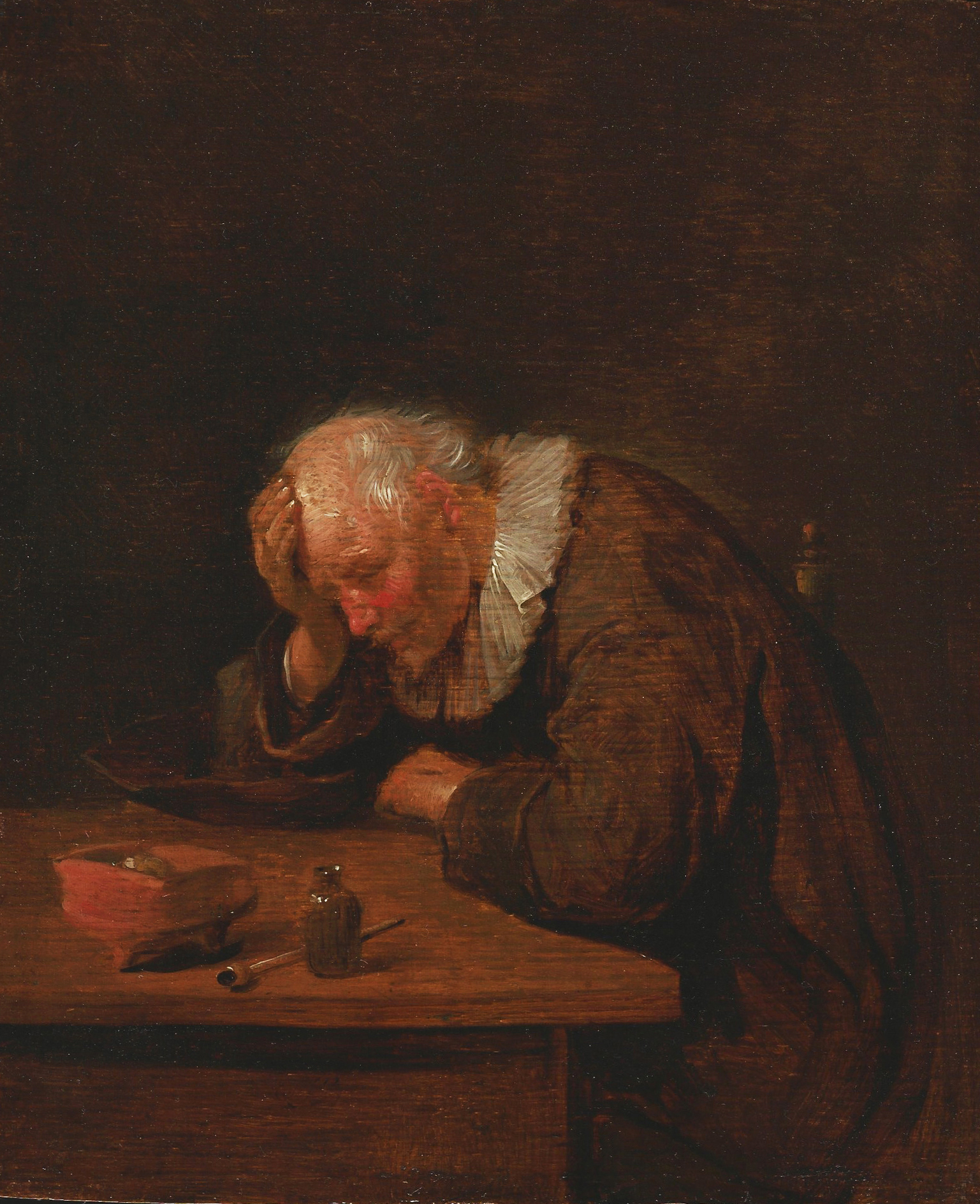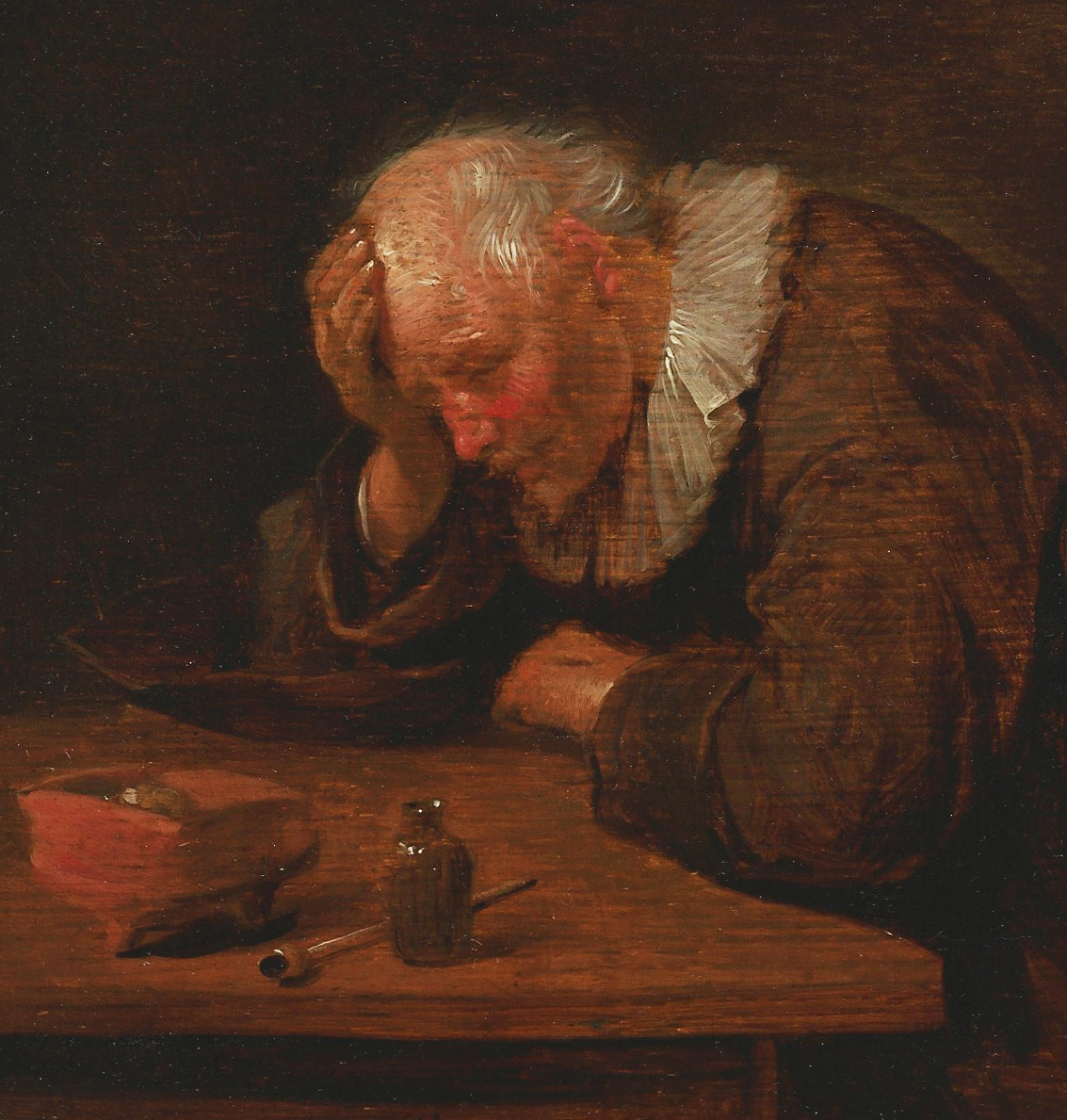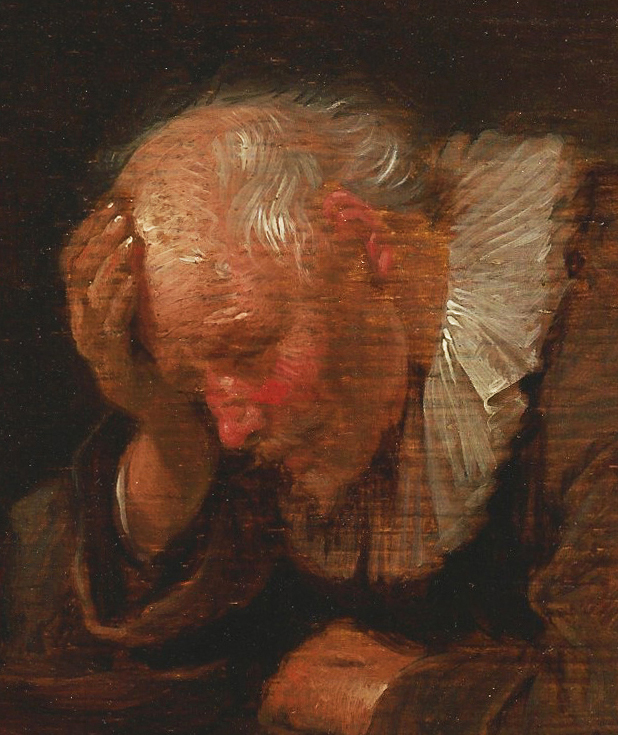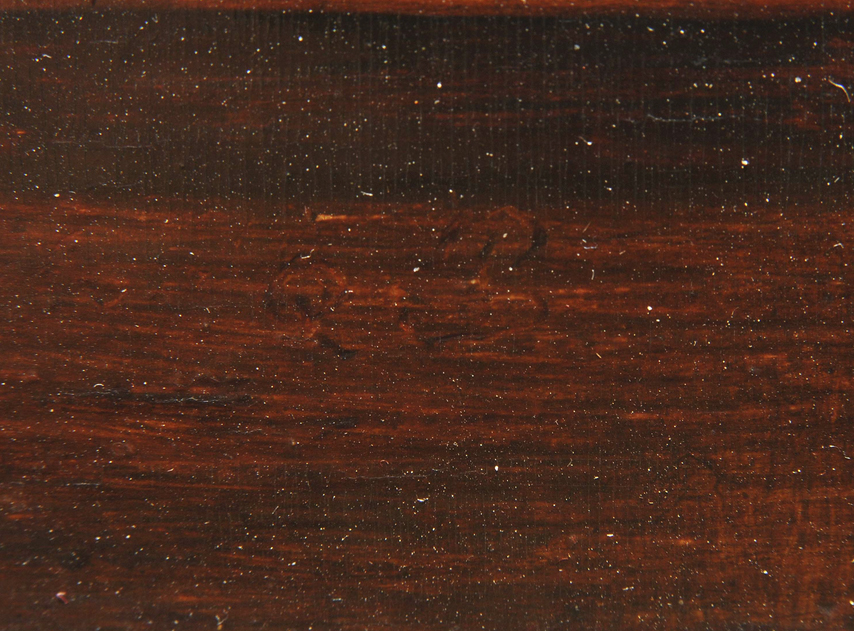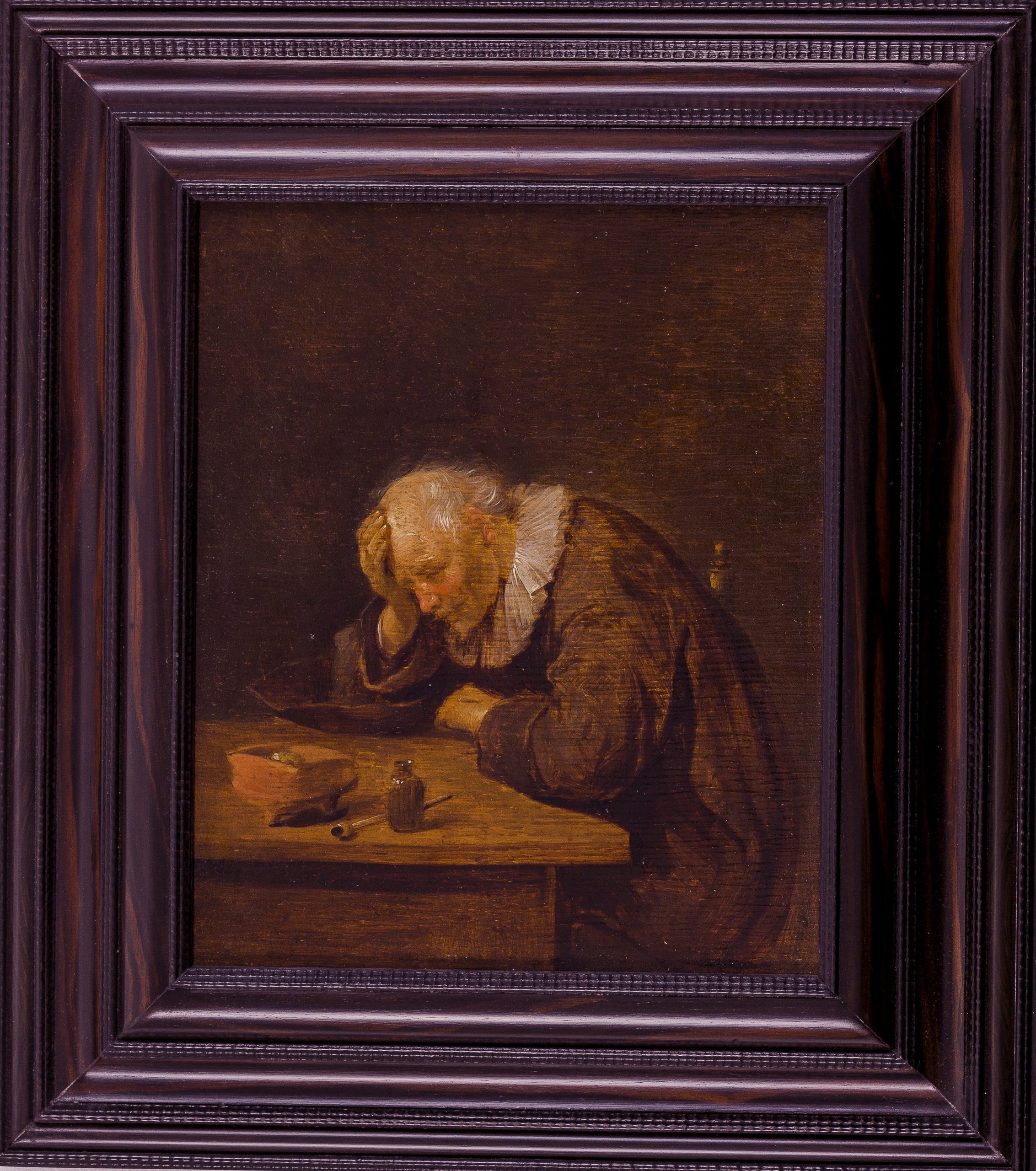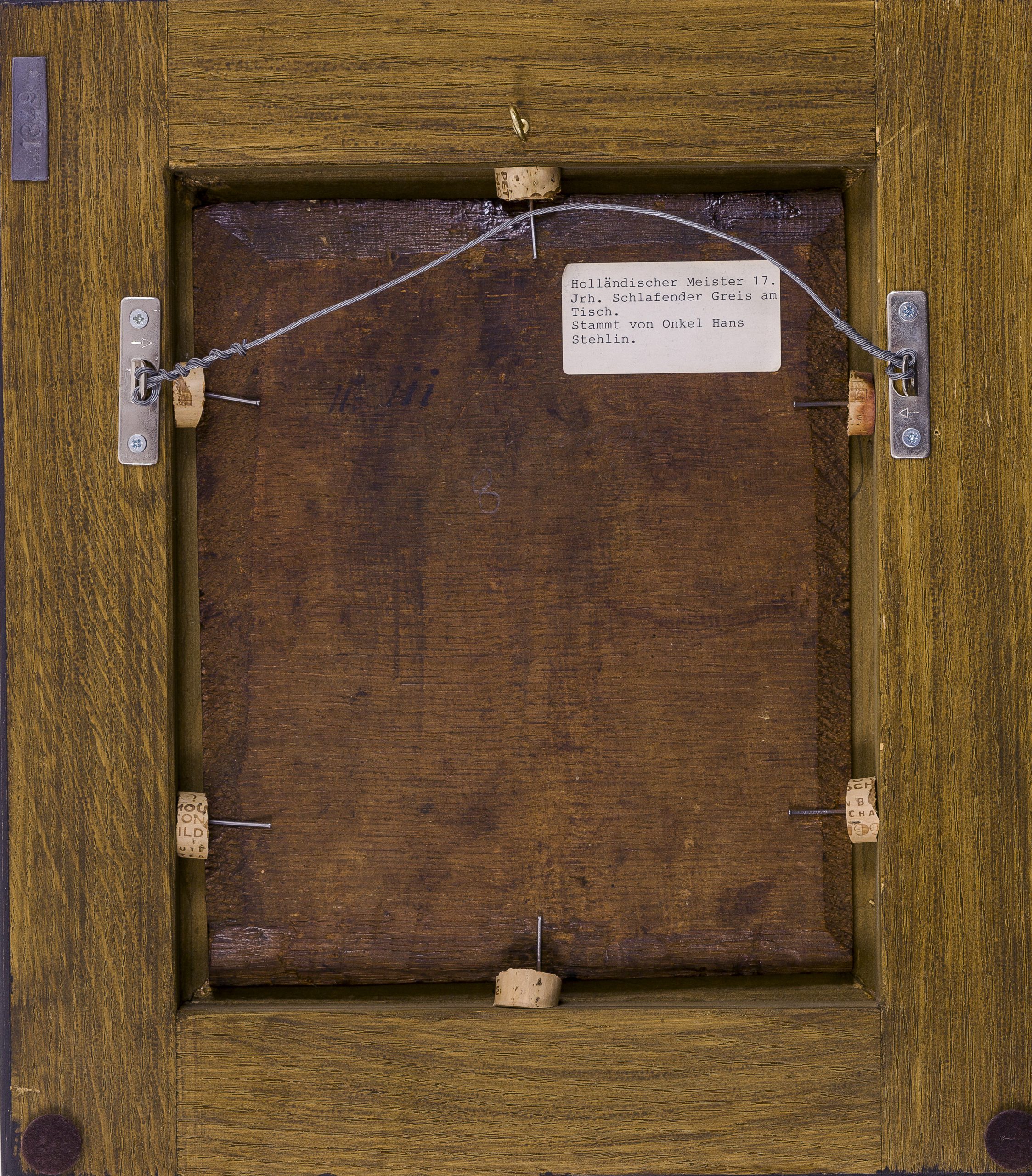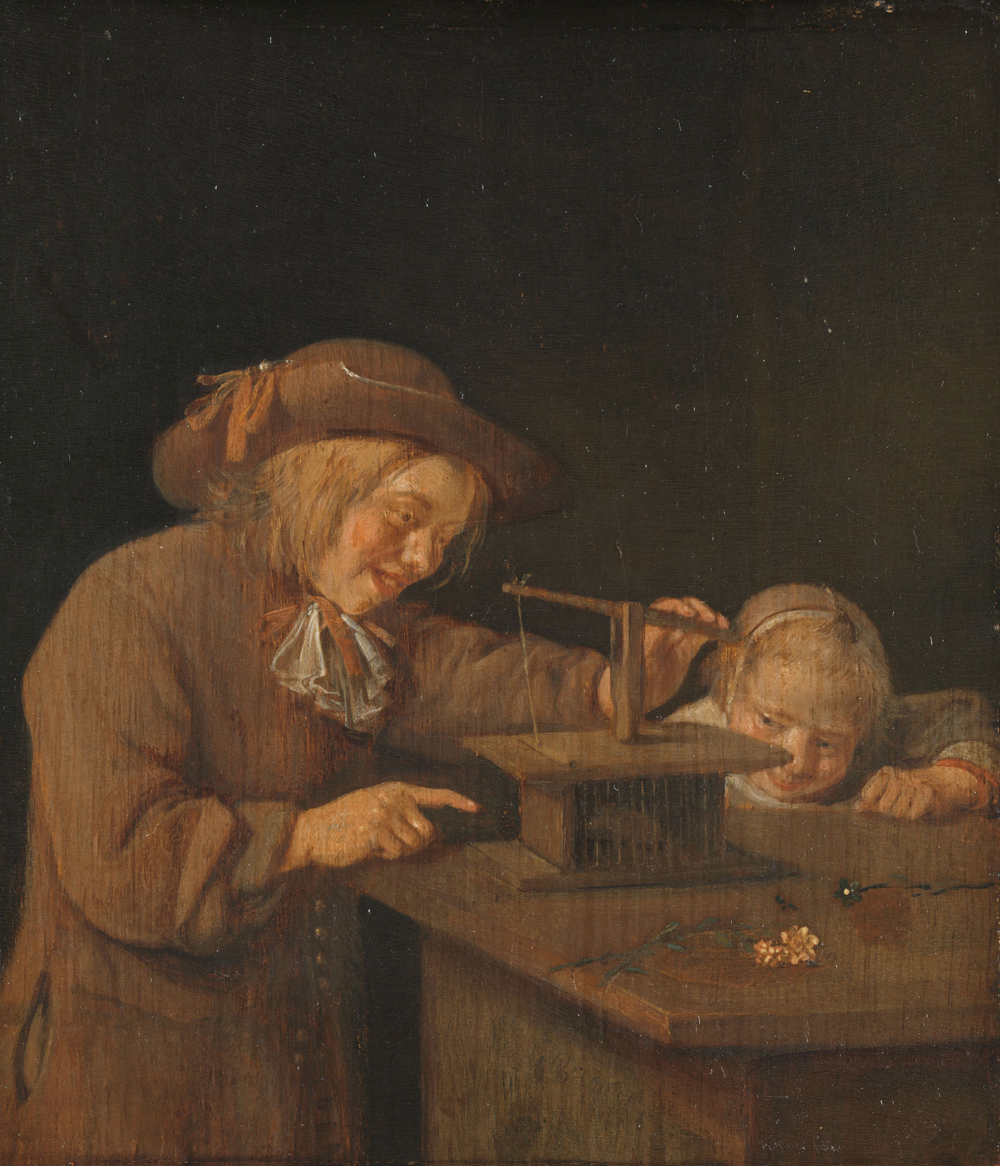QUIRINGH GERRITSZ. VAN BREKELENKAM (Zwammerdam c. 1622/30 – c.1669/79 Leiden)
Quiringh Gerritsz van Brekelenkam (Zwammerdam c. 1622/30 – c.1669/79 Leiden)
A Drunkard Asleep
Signed with monogram ‘QVB’ (lower left)
Oil on panel, 24.1 x 19.8 cm (9.5 x 7.8 inch); presented in a modern ebonised frame of 17th-century model
Provenance
Prof. Dr. Hans Georg Stehlin (1870–1941), palaeontologist, and by descent
***
Quiringh van Brekelenkam was probably born in Zwammerdam, near Leiden, somewhat after 1622.1 He married Maria Jansdr Charlé. Van Brekelenkam was trained in the studio of Gerrit Dou (1613–1675), one of the most celebrated painters of the Golden Age, who himself was the first pupil of Rembrandt.
Brekelenkam’s training was active as an independent master by 1648, and in that year was one of the co-founders of the Leiden painter’s guild of St Luke. His last known works are dated 1669, and he is thought to have died sometime afterwards, though the exact year of his death is no longer known.
Like his teacher Dou, Brekelenkam specialised in genre scenes, with representations taken from daily life. Such scenes were first painted in Flanders during the sixteenth century by Pieter Bruegel and his circle, but the subject was highly developed during the seventeenth century in the Northern Netherlands.
Many of Brekelenkam’s paintings include several figures – works with single figures such as the present are much less common. Because of their concentration of one figure, they are more personal and intimate than his other works, which is particularly the case in this painting. Brekelenkam’s works can be found in many of the world’s leading museums, including the National Gallery and Dulwich Picture Gallery in London, the Kunstmuseum in Basel and the Pushkin Museum in Moscow. Our work can for instance be compared with Brekelenkam’s Mouse Trap in the Rijksmuseum in Amsterdam, which is dated 1660 (last fig.).2 Both paintings share the same intimate approach and the brown tonality is equally comparable. Brekelenkam's loose handling of the brush can be beautifully observed in this excellently preserved and charming painting.
SOLD
1. For the artist, see Angelika Lasius, Quiringh van Brekelenkam, Doornspijk 1992.
2. Panel, 18.5 x 16.5 cm, monogrammed and dated ‘Q.B. 1660’, inv. no. SK-A-62; P.J.J. van Thiel, All the paintings of the Rijksmuseum in Amsterdam, Amsterdam 1976, p. 149, repr.
